Landscape is Knowledge










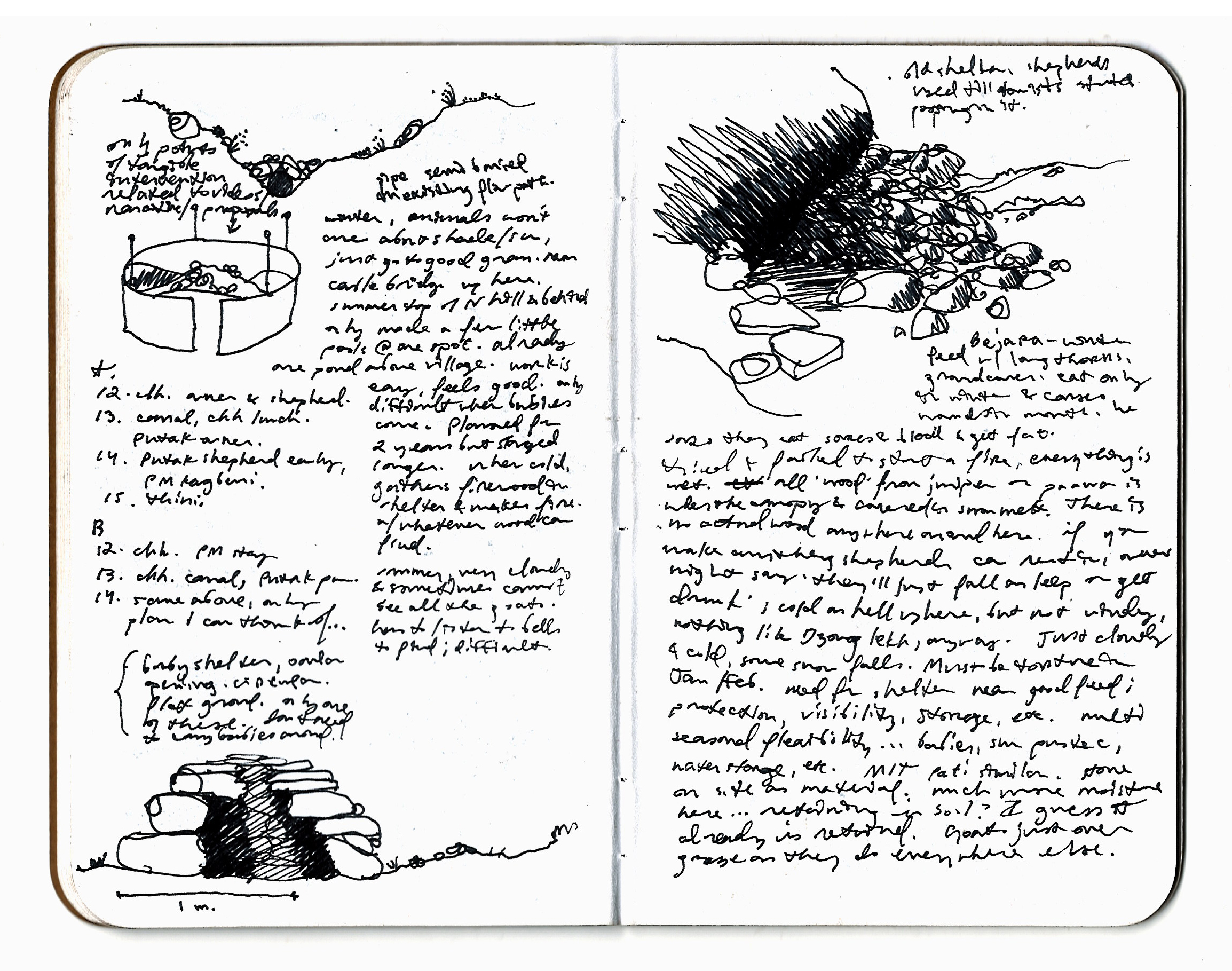

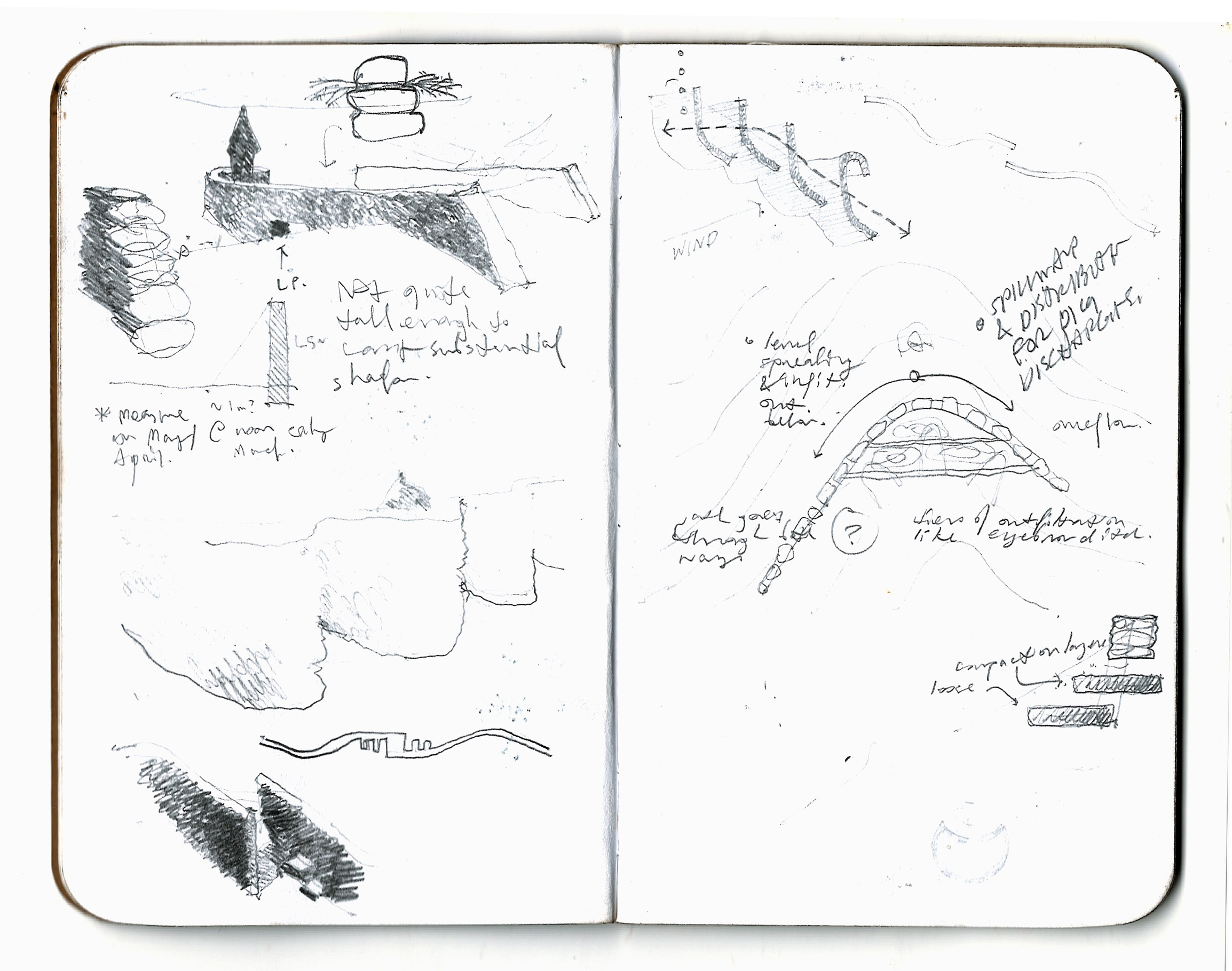


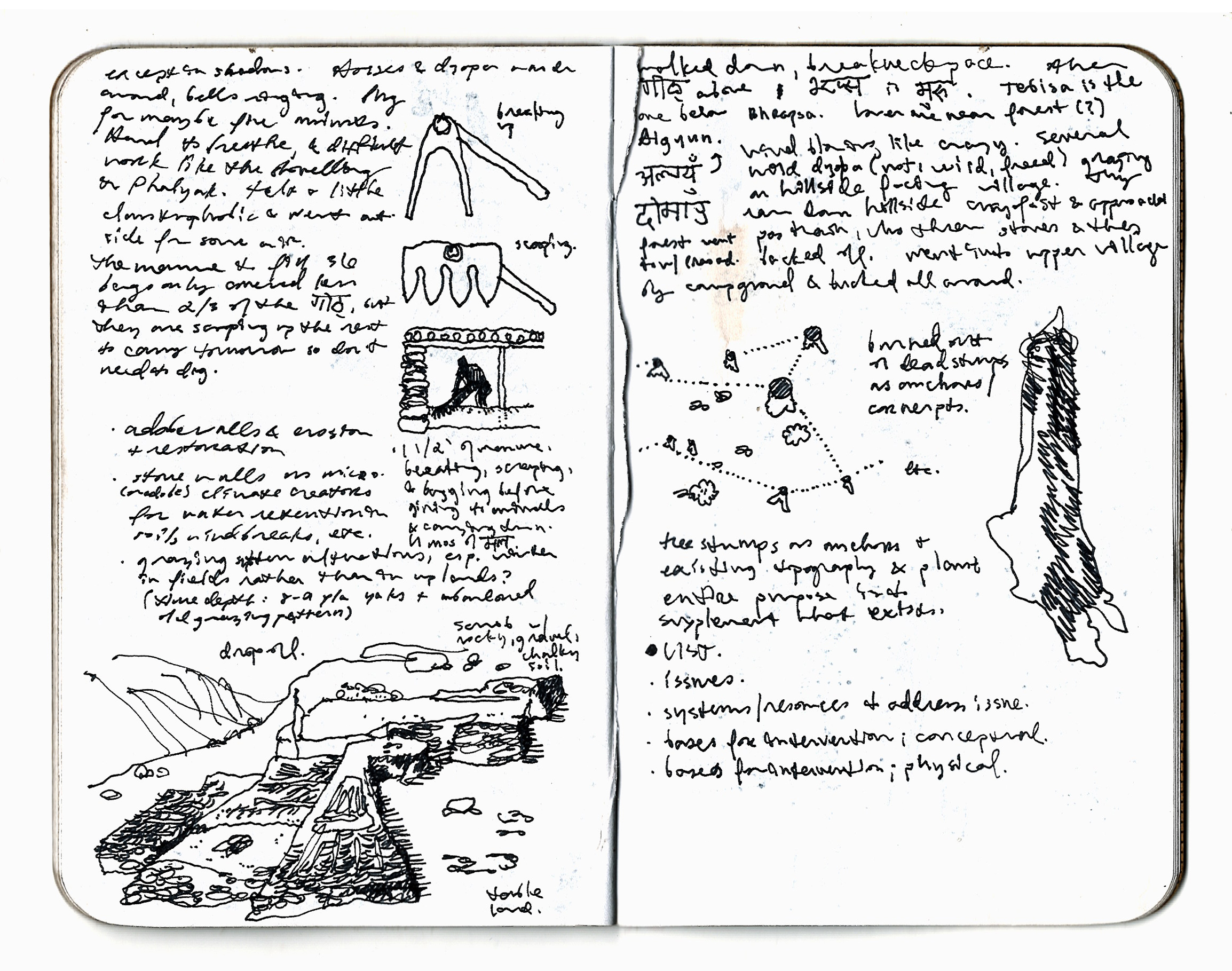
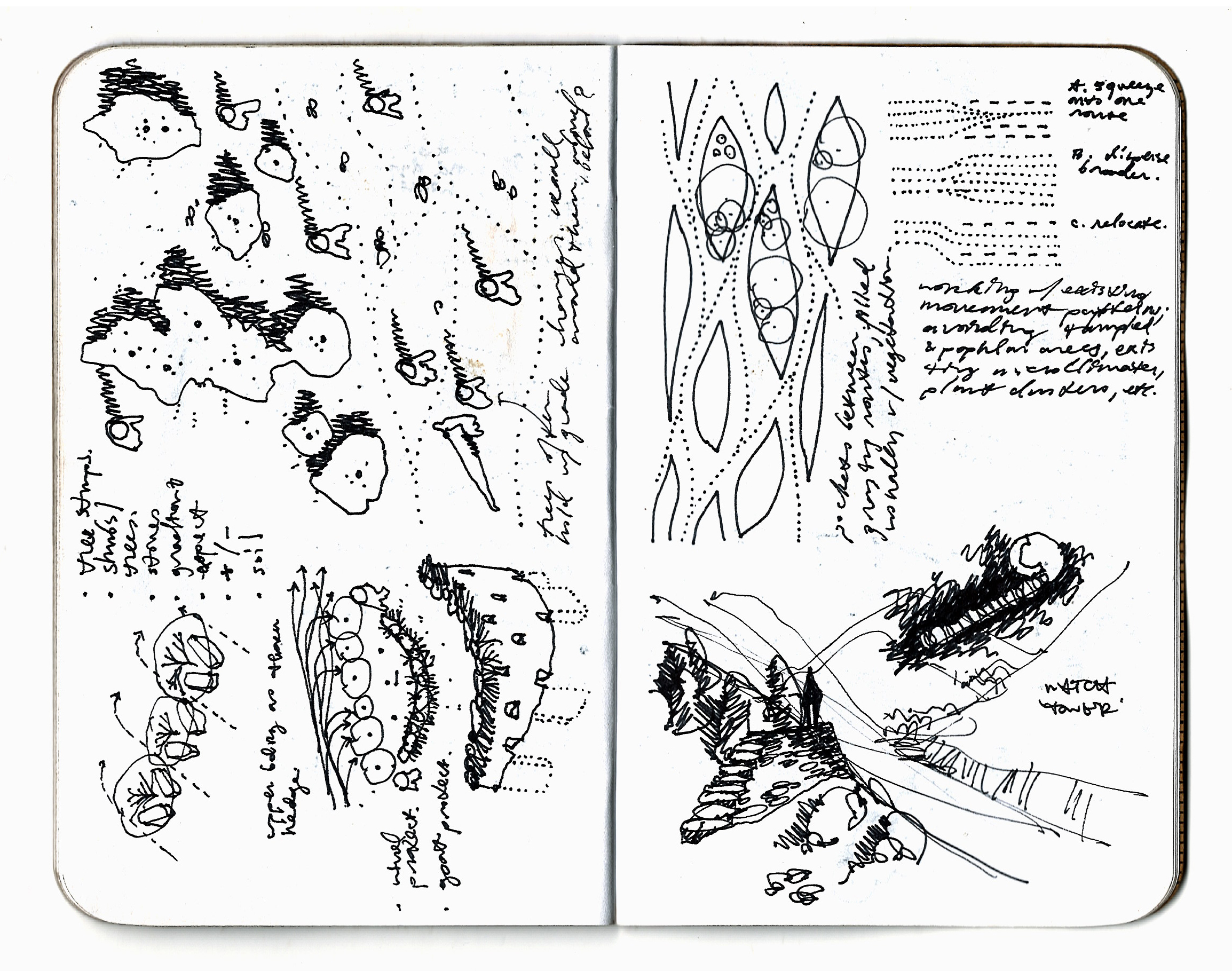
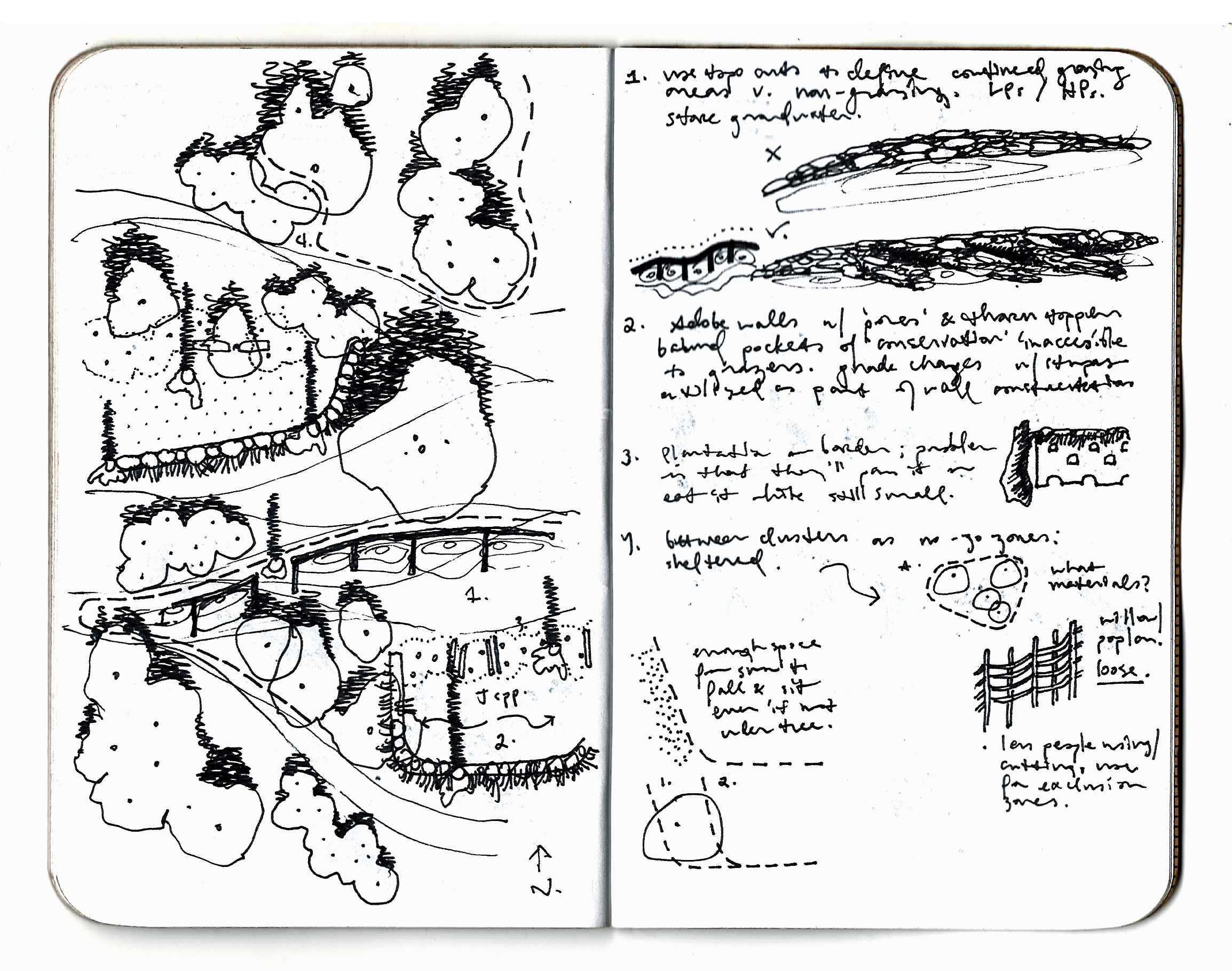






2017-2018
lower Mustang, Nepal
Through daily ranging practice, herders in Lower Mustang become intimately familiar with the contours and moods of the landscape. But emerging changes in climate, economies, and infrastructures are driving dramatic change. Herding practice must adapt.
Landscape opportunity emerges from changing resource cycles, and these proposals adapt existing practices, such as dry-stack stone wall building and rotational grazing, to adapt to emerging opportunity. Herders are positioned to guide the evolution of this landscape in response to emerging change, making their case for a recognized agency and landscape citizenship.
lower Mustang, Nepal
Through daily ranging practice, herders in Lower Mustang become intimately familiar with the contours and moods of the landscape. But emerging changes in climate, economies, and infrastructures are driving dramatic change. Herding practice must adapt.
Landscape opportunity emerges from changing resource cycles, and these proposals adapt existing practices, such as dry-stack stone wall building and rotational grazing, to adapt to emerging opportunity. Herders are positioned to guide the evolution of this landscape in response to emerging change, making their case for a recognized agency and landscape citizenship.
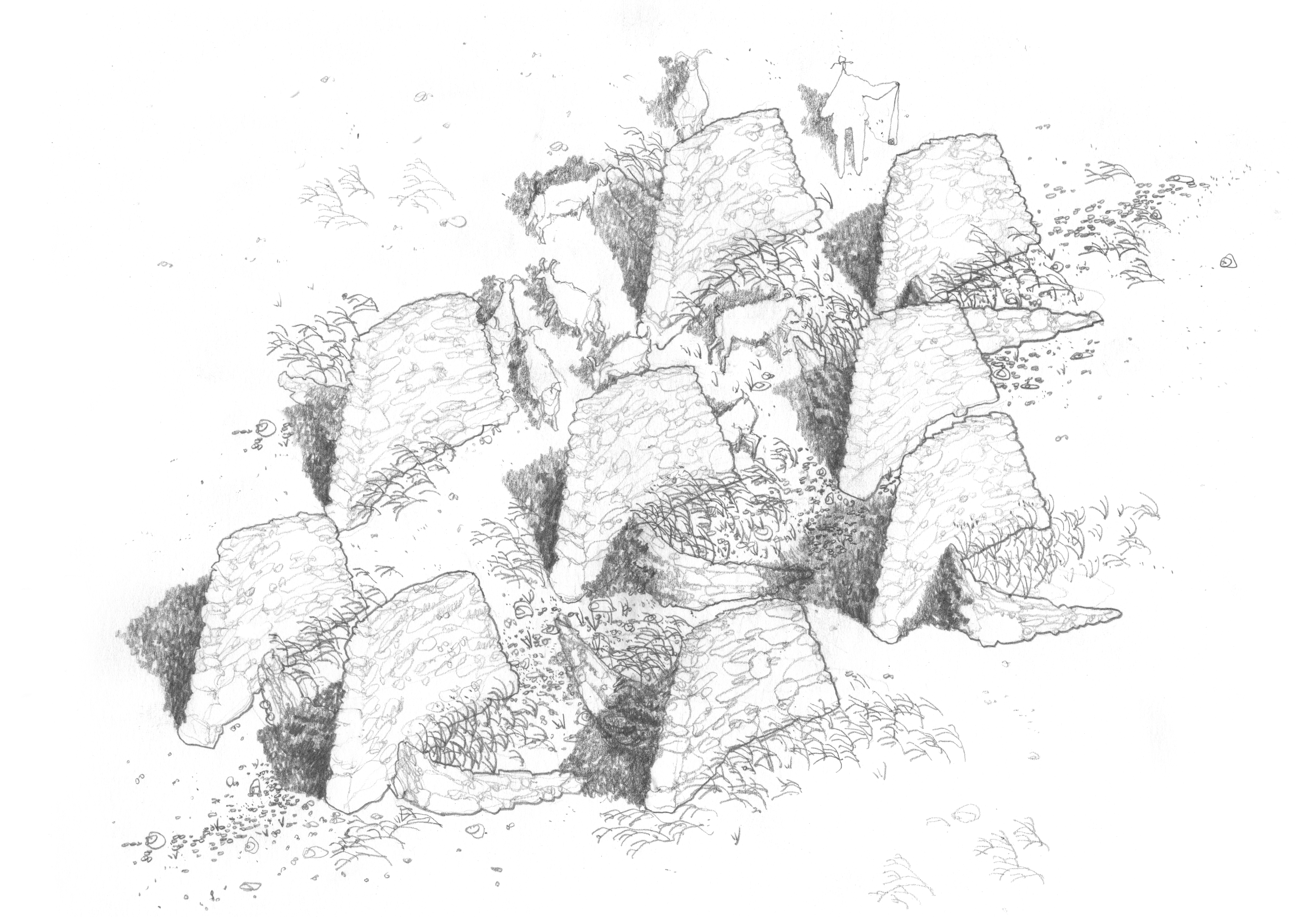

In the rangelands shared by Dzong, Chhyongkar, and Putak, the landscape is stressed by overgrazing. Increasingly sporadic and dramatic rainfalls which rush down from surrounding mountains have carved deep gashes in the groundplane, and these storm surges are quickly lost in a landscape with very little water. Within one of these seasonal flowlines, a field of walls protect small check dams from wind and sun. These check dams catch storm surges, charging groundwater, reducing erosion, and making more moisture available for vegetation. Though these walls interrupt visibility, a series of small wind shelters on surrounding hilltops are ideal observation positions, wind shelters, and places to cook a lunch of dhindo (buckwheat porridge).
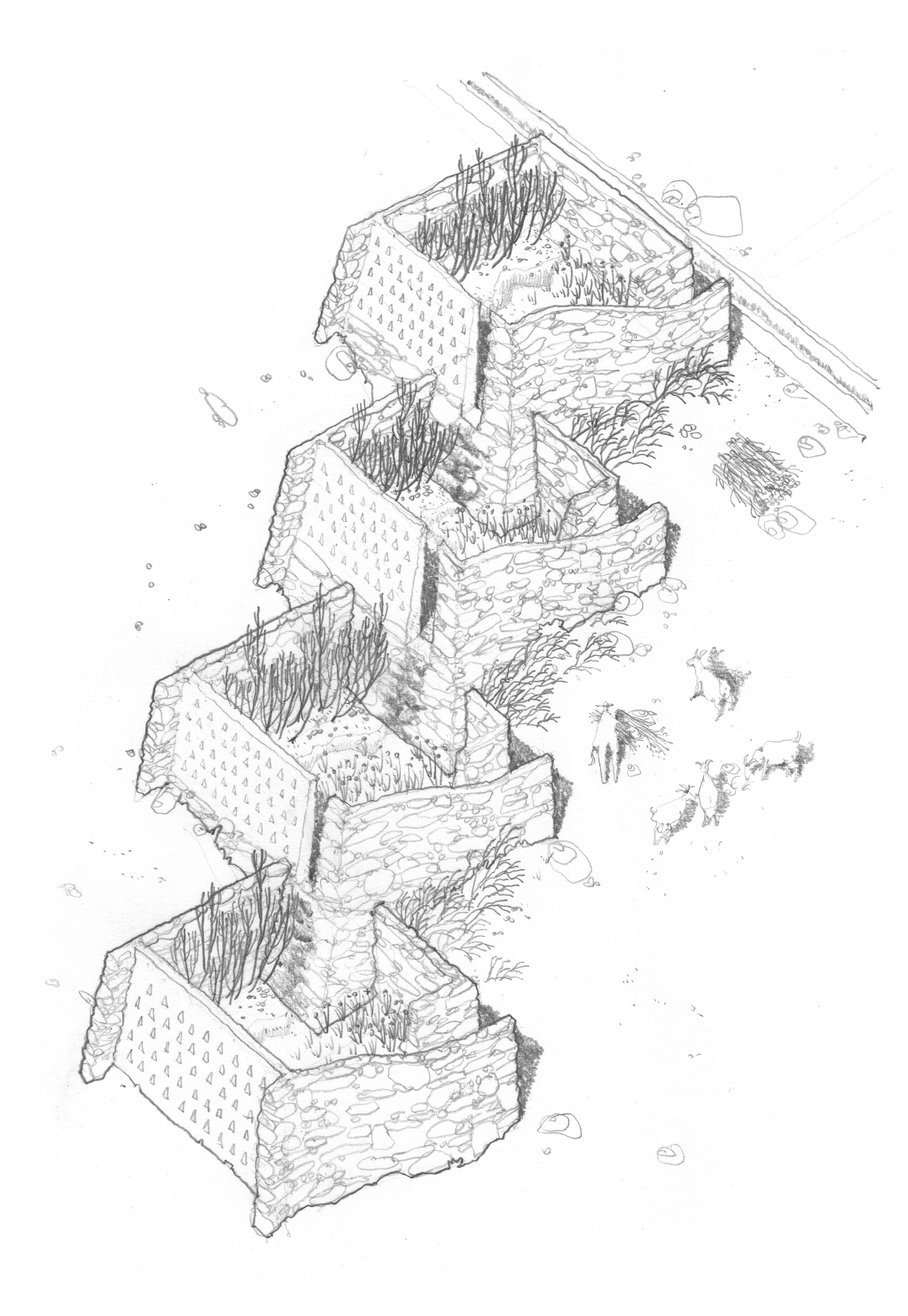

Next to Chhyongkar, a concrete canal feeds fields and a watermill in Dzong. But outmigration has left many fields untended, and less water is needed for irrigation. Both fuel and fodder are in dramatically short supply in the village, especially for landless shepherds unable to grow their own. In winter, they often resort to lighting shrubs on fire in the field to melt snow and stay warm. Along this canal, a series of tiered enclosures use surplus water to grow fuel and fodder. As at the other sites, stone from several nearby rockfalls and site-sourced soil are used as building materials. In each enclosure, the south-facing wall is made from adobe marked by deep triangular indentations. These accelerate the weathering process, gradually opening the fodder-filled enclosures to musk deer and other species as grazing practice disappears. As grazing practice dwindles in the future, this body of knowledge will maintain its necessity in emerging conservation practice, and the agency of shepherds in the landscape will continue.


The rangelands above Thini village all lie on south-facing mountainsides; forests on north-facing slopes make it difficult to keep track of flocks and provide shelter for leopards. Sparse vegetation leaves the groundplane exposed to sun and wind, and forces shepherds and flocks to move continuously in search of fodder. Each portion of rangeland has a name and a goth, a set of seasonal shelters made from dry-stack stone. To provide more fodder, new infrastructures create moisture-preserving microclimates. The loss of soil moisture to harsh sun and wind is compounded by erratic precipitation. Stone walls oriented perpendicular to the prevailing wind and movement of the sun create a microclimate that preserves moisture. In winter, they create snow reservoirs. Contour ditches run perpendicular to the walls, slowing water flow, reducing erosion, and supporting groundwater recharge. A small tower at the high point of these walls give herders improved visibility.
